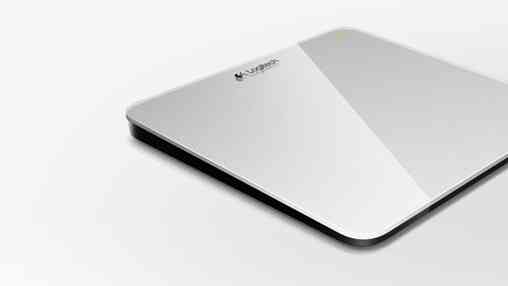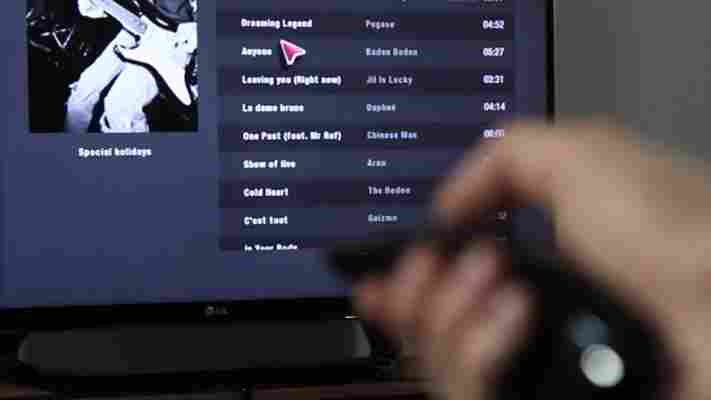Whistle , the maker of a pet health and activity monitor of the same name , has taken the wraps off its next-generation pet wearable for US dog owners today, called WhistleGPS. As its name suggests, the WhistleGPS is a device that comes with a companion mobile app to help owners always keep a tab on their pet’s location.

It adds on to Whistle’s existing activity monitoring device and app system, which monitors your dog’s activities across different categories including resting, walking, playing, running and swimming. The WhistleGPS is able to come to fruition in the US because of the deployment of a wireless network SIGFOX , which provides cellular connectivity for the Internet of Things.
The device itself attaches to a dog’s collar to collect key information including location, activity and rest. This means that other than using WhistleGPS to pinpoint their dog’s exact location on a smartphone, owners can also make sure their dogs are getting an adequate amount of daily activity.
Though there have been GPS devices for pets on the market, Whistle claims its device is a much better offering than other available options now. “Until now, GPS devices on the market simply didn’t make sense for most dog owners. Subscription costs are high, battery life is short, and products are too big for most breeds to even wear,” Whistle CEO Ben Jacobs says.
Comparatively, the WhistleGPS weighs only 16g and the company claims that it is less than one-third the size of other available trackers, which makes it the smallest pet monitoring device on the market. Secondly, Whistle says that its GPS has two times the battery life of other devices, and you can use it for up to a week before needing to recharge the battery.
The WhistleGPS is available for pre-order from now till May 27, 2014 on Whistle’s website for $49, down from the usual retail price of $129. You have to wait quite some time before finally getting your hands on it though — the WhistleGPS won’t ship till next summer.
Headline image via Shutterstock
Logitech Trackpad for Mac review: A viable Magic Trackpad alternative, with a clever addition
Please see the update at the end of this review.

A couple of days ago Logitech announced the impending release of its Trackpad for Mac , a $69 alternative to Apple’s own Magic Trackpad offering. Logitech was quick to ship one our way, and it only took a few minutes of use in order to see the positives and perhaps fatal flaw of its device.
I should preface this review by saying that I’ve been a long-time, vocal fan of Logitech peripherals. Of course, I’m also a big fan of Apple’s own products, but I’m always open to the idea that there’s something out there that works better than what Apple brings to the table.
The box for the Logitech Trackpad is simple, containing the trackpad itself, a coiled micro-USB cable and an owner’s manual. The manual is short, since there’s really nothing out of the ordinary about how the device works. Pair it via Bluetooth, make sure there’s a charge and you’re ready to go. It’s that rechargeable aspect that intrigued me about the Trackpad, since Apple’s device runs on two AA-sized batteries. I’ve found myself wanting for charged batteries as my Magic Trackpad died, due largely to poor planning on my part.
So I paired the device, checked the charge and started using it. When scrolling and pointing, it feels almost identical to Apple’s, though the “click” of a button push is notable easier to accomplish on the Logitech. This could be good or bad for you, depending on how heavy-handed you tend to be. It sits notable lower, in the far portion, due in part to not having the height of AA-sized batteries. Though it’s not uncomfortable, I prefer the angle of the Magic Trackpad.
But then I tried to scroll a page in Chrome, and I immediately found the flaw. It was jerky. But not terribly jerky, like scrolling on an underpowered computer. The stalling was minute, but enough to be jarring to the experience. I tried three different browsers, as well as a number of apps, and I couldn’t ever get the smooth response that I’m used to seeing with my MacBook Pro’s standard trackpad, or with the Magic Trackpad.
The other factor that gets a big thumbs down from me is the lack of intertial scrolling. If you use a Mac, you’re familiar with how this works. If you don’t use a Mac, I’m not sure why you’re reading this, but I’ll explain. When you scroll on a Mac, and let off from the trackpad, your page continues to scroll slightly, slowing itself to a stop over a few milliseconds. It feels very natural once you get used to it, and having that suddenly disappear is very disrupting.
Update: I hate having to admit when I’m wrong, but I will. And I was wrong about the Logitech Trackpad. The problem at hand is that I thought I knew too much. Logitech makes a software called Setpoint that it uses for most of its Windows peripherals. The Mac version of this is called Control Center, and I already had it installed. So when I loaded up the Trackpad and found it to be jerky, I chalked that up to a flawed product.
But the flaw was actually my own. There’s a specific software for this trackpad and I failed to notice that fact. After loading the software, the device works every bit as well as Apple’s own Magic Trackpad.
So the choice comes down to this — For an equal price, do you want to own Apple’s device, or a rechargeable version from Logitech? If you’ve been in the market for a Magic Trackpad, the convenience of a rechargeable version should be on your mind. As for me, I’m just glad to see that Logitech is holding up to it reputable standard.
➤ Logitech Trackpad for Mac
Deezer is bringing its streaming music service to smart TVs, via deals with Samsung, LG and Toshiba
Streaming music service Deezer has announced deals with three electronics giants to launch its service on smart TVs during 2013.

The deals with Samsung, LG and Toshiba will allow Deezer subscribers to access their favorite playlists, tracks and recommendations on compatible TVs. Meanwhile, non-subscribers will be able to explore 30-second clips of the service’s 20 million song library, and will have unlimited access to thousands of artist-based and themed radio channels.
Deezer says that it has more than three million paying subscribers across more than 180 countries. Its users listen to an average of 60 hours of music per month. Chief rival, Spotify , which is available in fewer countries but is active in the US unlike Deezer, has signed deals with Samsung and with TiVo , helping establish its own presence in the living room.
The living room will be an important battleground for music services, just as it is for video streaming companies, and Samsung in particular seems willing to spread its bets, offering both Spotify and Deezer, and with plans to expand its own Music Hub offering to its TVs. For now it’s probably too soon for any of these companies to look at exclusive deals – the more people they can get used to the idea of streaming music from their television the better.
Deezer will be available on Samsung smart TV models produced from 2011 (Europe only); LG smart TV models produced from 2011 (worldwide), and Toshiba smart TV models since 2011 (Europe and MEA/Asia, Pacific) and smart TV models produced from 2013 (worldwide).
The video below from Deezer shows how it works on an LG set.
